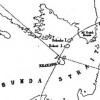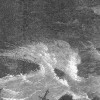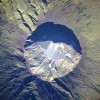
Kathleen Frederickson, “British Writers on Population, Infrastructure, and the Great Indian Famine of 1876-8”
This article examines British writing about the 1876-8 famine in southern and western India. In British newspapers and journals, the turn to thinking about famine in terms of the total population obscured the extreme variations in food access that worsened with rising economic inequality. When the British press in the late-1870s turned to human causes of famine, they either argued that India’s population overburdened India’s land, or suggested that more rail construction would prevent enough deaths sufficiently to mitigate British responsibility for famine conditions. The turn to population-based arguments helped either to perpetuate the belief that famine was a quasi-natural part of India or to parse the sudden increase in the frequency and severity famines in India under British rule.

Monique R. Morgan, “The Eruption of Krakatoa (also known as Krakatau) in 1883”
This essay gives a brief overview of the events of 26-27 August 1883, when the volcanic island of Krakatoa in Indonesia exploded; it generated tsunamis which killed over 36,000 people, was heard 3,000 miles away, and produced measurable changes in sea level and air pressure across the world. The essay then discusses the findings of the Royal Society’s Report on Krakatoa, and the reports in the periodical press of lurid sunsets resulting from Krakatoa’s dust moving through the atmosphere. It closes by examining literature inspired by Krakatoa, including a letter by Gerard Manley Hopkins, a poem by Alfred Tennyson, and novels by R. M. Ballantyne and M. P. Shiel.

Krista Lysack, “The Royal Charter Storm, 25-26 October 1859”
This essay considers the Royal Charter Storm, perhaps the most devastating weather event to occur in Britain in the nineteenth century, a gale that is named for the wreck of the Royal Charter steamship off the coast of North Wales and the subsequent drowning of most of its passengers and crew. Although this tragedy resulted in improvements in weather warning systems that contributed to the rise of modern forecasting, that is not the storm’s only legacy. In the aftermath of a parallel media storm, a host of reports ran in newspapers across the country in the days, weeks, and even months that followed, together producing a sense of this wide-ranging storm as a shared, national event. Among these reports was Charles Dickens’s account in All the Year Round, a striking portrayal of the losses associated with the wreck and an effort to ameliorate the suffering it had caused. Rather than predicting the weather, reports of the storm in the popular press turned to another kind of weather model of sorts, the retrospective work of memorializing and sympathy.

Gillen D’Arcy Wood, “1816, The Year without a Summer”
The so-called “Year Without a Summer”—1816—belongs to a three-year period of severe climate deterioration of global scope caused by the eruption of Mt. Tambora in Indonesia in April, 1815. With plummeting temperatures, and disruption to major weather systems, human communities across the globe faced crop failures, epidemic disease, and civil unrest on a catastrophic scale. In cultural terms, the dreary summer of 1816 is best known as the setting for Mary Shelley’s writing of Frankenstein, a novel whose iconic Creature offers a figure for the millions of hungry and dispossessed of Europe during the protracted climate emergency that followed Tambora’s eruption.
